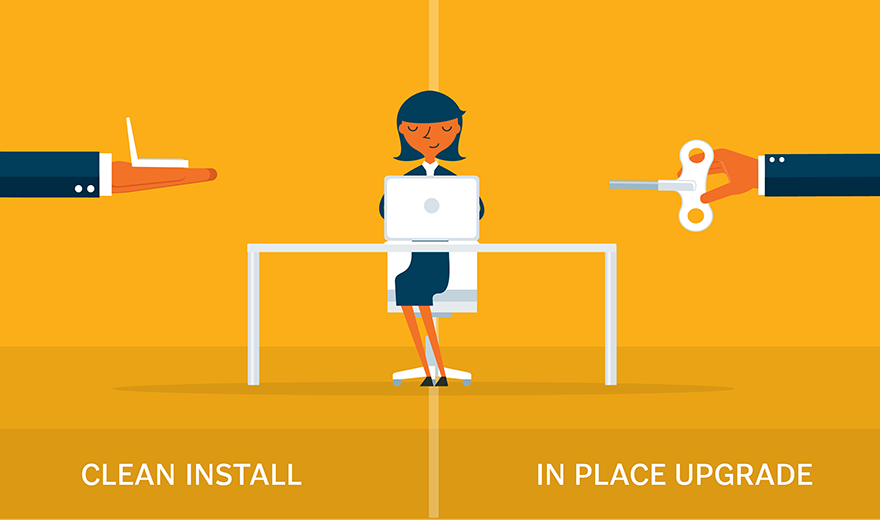Get to know the Windows upgrade paths for different OSes
One of the first steps in the migration process for IT is choosing between a Windows 10 clean install and an in-place upgrade.
The two options each have significant pros and cons. A Windows 10 clean install is a fresh start for a desktop; it resets all the data and configurations so the transition to Windows 10 is as simple as possible. This ensures that any bugs from the previous OS don't carry over to Windows 10. A clean install is the only viable method of transitioning to Windows 10 from Windows XP.
The obvious downside of a clean install is also its greatest strength -- all of the previous desktop's data is gone. While this simplifies the transition and provides a clean slate on which IT can deploy Windows 10, it also removes all of the users' files, personalization and desktop configurations. For example, browser history and bookmarks do not carry over, which can slow down user acclimation to the new desktop.
An in-place upgrade may present a few more logistical challenges for IT pros, such as testing file and application compatibility and finding storage space for user data that is needed after the transition. But the end result is a more comfortable transition for users because their desktops are virtually unchanged. When a user logs onto his Windows 10 desktop, all of the compatible settings, applications and files remain.
However, IT must consider the potential bugs from the previous OS that can come along through the Windows upgrade path, as well.





